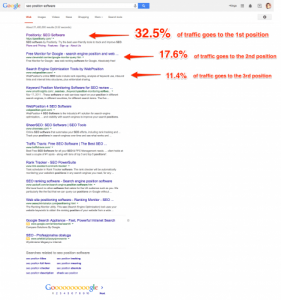By Scott Dust

When you consider who is in charge of your job satisfaction, who comes to mind? Your most plausible options are likely your supervisor, human resources, or top management. Got your answer in mind?
This is actually a trick question, because the answer is “you.”
In the post-pandemic era we’re approaching, company solutions that are top-down and meant to span an entire organization may backfire when applied to the majority of workers. As an employee, the responsibility to find fulfillment, challenge, and happiness at work ultimately falls to you. So, instead of hopping on the Great Resignation bandwagon, the first step should be to seek opportunities to job craft. I define job crafting as proactively customizing tasks and relationships with others to create a fulfilling job.
Seeking out a new job should be a measure of last resort. Most employees underestimate the switching cost and overestimate the potential for newfound job satisfaction; the grass must be greener.
But job crafting is not for the faint of heart. It takes self-awareness (along with an awareness of others) and a willingness to stimulate change, which in some cases creates conflict. Ensure you’re thinking through the possibilities and potential implications with these tips.
The 4 types of job crafting
Increasing structural resources. As human beings, we have an innate desire to be in control of our day-to-day behaviors. As employees, however, this need for discretion might conflict with an organization’s pre-defined tasks and policies.
If you’re feeling stifled—unable to work in ways that you know are more efficient or productive—it might be time to increase your structural resources. For example, if you feel like you are mindlessly going through the motions, completing tasks that seem unnecessary, make the decision to adjust the tasks.
Once you’ve proactively made this change, document the rationale, experiment, evaluate, and iterate. Such changes in structural resources can be beneficial in that they simultaneously allow you to engage in more fulfilling, autonomous activities, while also helping the organization improve.
Increasing social resources. To fully realize your potential, it will be necessary to get ideas and suggestions from others. Unfortunately, organizations aren’t always equipped with plentiful opportunities to offer feedback, advice, or mentorship.
In most cases, employees get stuck in a rut, getting localized feedback from their direct manager. If you feel like you’re not getting new, thought-provoking insight, it might be time to pursue another form of job crafting, called increasing social resources.
It’s important to keep in mind that social resources aren’t always handed to us. Look outside your team, department, division, or company, to find the social resources that will help you grow and develop.
Increasing challenging demands. If you are feeling bored or uninterested in your work assignments, it might be time to increase your challenging demands. This form of job crafting consists of pursuing projects and assignments that allow you to develop new skills.
Although it might feel comfortable to have a handle on your work tasks, it’s important to spend a small percentage of your time on challenging assignments that help you round out your skillset and stay relevant.
Some organizations set aside time for employees to pursue passion projects, like Google’s 20% innovation model (20% of time is to dedicated to novel and useful ideas). Don’t wait for your organization to give you the green light on such activities. It’s your job to be the best employee you can be, and in many cases, this requires you to create these opportunities yourself.
Another great option is to start “sitting in” on new projects that you think are interesting, but aren’t formally part of your responsibilities. In most cases, eventually, you’ll be asked to participate.
Decreasing hindrance demands. Job crafting doesn’t only mean adding more to your plate. It can also involve decreasing hindrance demands, which entails shedding stressful tasks or relationships.
The best way to figure out how to decrease hindrance demands is to start by keeping track of your work activities for a few weeks. For each task and relationship, evaluate the degree to which it is energy-depleting. These are your opportunities for decreasing hindrance demands.
The next step is to begin having conversations with colleagues or managers about re-negotiating your tasks or roles. In some cases, being forthcoming with your stressors helps everyone re-allocate team responsibilities. In other cases, managers are able to re-allocate tasks to others or re-structure teams in ways that solve the problem.
Cautions and caveats of job crafting
It’s important to understand the limitations of job crafting. Keep in mind that job crafting can fix person-job misfit, but it can’t overcome systemic issues such as misalignment with organizational values (i.e., person-organization misfit) or a lack of identification with your profession (i.e., person-vocation misfit). You must be in tune with the problem you are trying to solve.
It’s also critical to keep in mind that job crafting might not always be well-received by others. For example, job crafting might force colleagues to change in ways that they don’t want to change. Relatedly, uninformed superiors might rate job crafters as low performers because they are spending time on unassigned responsibilities.
When it’s all said and done, you, not your organization, are responsible for your job satisfaction. It’s important to take stock of your options and approach them strategically. Further, to ensure that job crafting doesn’t lead to a backlash, it’s important to consider the rationale for your potential job adjustments and your surrounding organizational circumstances.
Scott Dust is a management professor at the Farmer School of Business, Miami University, and the chief research officer at?Cloverleaf, a technology platform facilitating coaching for everyone.
Fast Company , Read Full Story
(50)
Report Post








